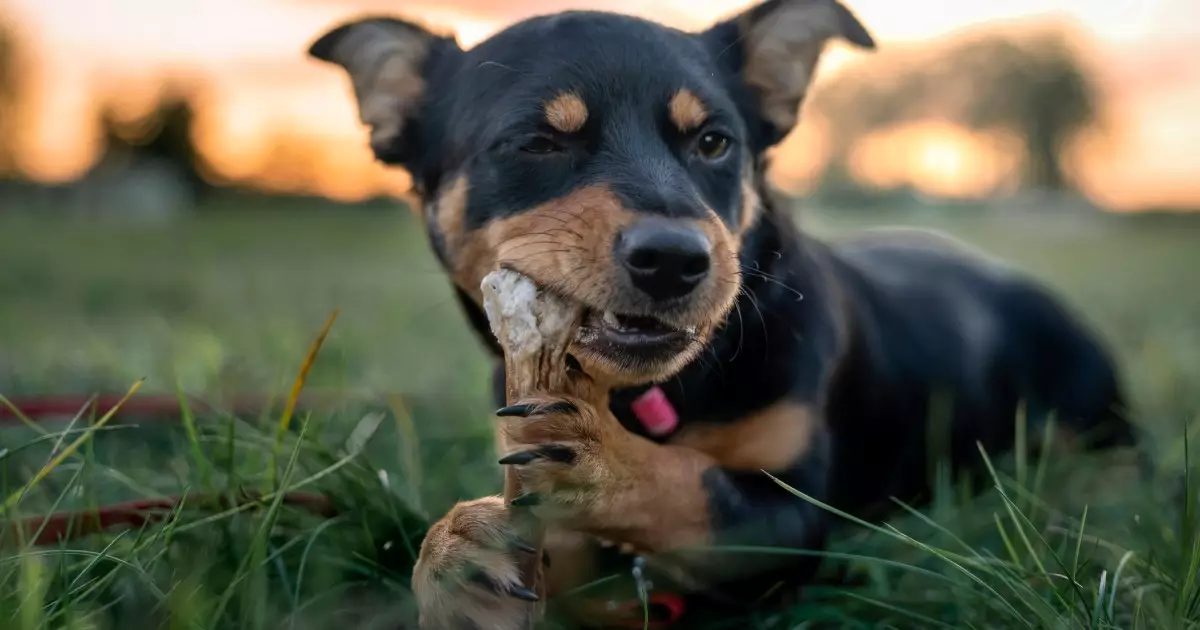In the evergreen debate over canine nutrition, the topic of bones emerges as particularly controversial. Dog owners often grapple with a slew of conflicting information regarding whether bones are a safe treat for their beloved pets. The notion that dogs, being natural carnivores, should be allowed to gnaw on bones carries significant weight. However, this assumption must be balanced with knowledge about which bones pose risks and how to mitigate those risks effectively. A proactive discussion with your veterinarian is crucial in this regard—don’t overlook this essential step before introducing new chewables into your dog’s diet.
The Hazards of Cooked Bones
First and foremost, it’s critical to recognize that not all bones are created equal, especially when it comes to cooking. Cooked bones, such as the remnants of Sunday roast or grilled barbecues, can turn into dangerous projectiles. When bones are subjected to heat, they become prone to splintering, creating sharp fragments that can wreak havoc on your dog’s internal structures. These splinters may lead to broken teeth, injuries to the mouth or throat, and even severe internal blockages, which can be life-threatening. The repercussions of consuming cooked bones are severe enough that they warrant an absolute no from any responsible dog owner.
The situation worsens with commercially available bones that often come loaded with seasonings, preservatives, and other additives. Notably, the FDA has recorded numerous instances of dogs suffering after consuming these products, ranging from gastrointestinal blockages to dire health consequences that can lead to death. It’s paramount for dog parents to perform due diligence when selecting bones or chews, opting for products that prioritize safety and wholesomeness.
The Raw Alternative
As we delve deeper into the subject of bones as dog treats, we must address the raw counterpart. Uncooked bones, especially larger varieties like beef or lamb bones, are generally considered safer than their cooked counterparts. However, even with raw bones, caveats abound. It’s widely advised to steer clear of chicken bones, as they are particularly brittle and can splinter, potentially leading to serious harm. The art of picking the right bones does not end there; dogs that have a history of gulping food without chewing might still be better off avoiding any type of bone altogether to prevent choking incidents.
For those considering raw bones as part of their dogs’ diet, the conversation inevitably shifts toward the risk of bacterial contamination. Handling raw bones with care can mitigate these risks, as proper storage and hygiene practices—e.g., sanitizing your hands and the surfaces involved—go a long way in safeguarding your dog’s health.
The Case for Recreational Bones
Recreational bones, intended primarily for stimulating your dog’s natural chewing instincts, offer a different set of benefits. Typically larger than bones meant for consumption, they allow dogs to exercise their jaws without the risk of ingesting harmful splinters. These bones are often filled with marrow and can be found at local butcher shops, making them an enticing option for dogs that love to chew but are prone to eating their treats whole. Despite their advantages, supervision remains critical. Allowing dogs to chew unsupervised could lead to disasters, including choking or gum injuries.
The Mental and Physical Benefits of Chewing
Beyond ensuring dental hygiene and the enjoyment of a satisfying chew, bones can also serve as a tool for mental stimulation. Chewing not only relieves boredom but also provides an outlet for anxiety—an essential consideration for dogs prone to stress. As a bonus, the act of chewing stimulates saliva production, which plays a significant role in reducing plaque build-up and promoting overall oral health.
However, responsible pet ownership involves weighing these benefits against the risks. Some veterinarians advise against bones altogether, citing their potential dangers. An alternative gaining traction is bone meal. This powdered form can be sprinkled over dog food, providing necessary nutrients without the inherent risks posed by whole bones. Yet, choosing bone meal does strip away the mental engagement and enjoyment associated with the chewing process.
Guidelines for Safe Chewing
If you decide to let your dog enjoy the experience of chewing bones, a set of essential guidelines will help minimize risks. Always supervise your dog while they chew, toss out any gnawed bones that have become brittle, and avoid offering bones to dogs with dental issues. Furthermore, ensure bones are appropriately sized to prevent accidental swallowing. Remember that moderation is vital; limits on chewing time, such as 10 to 15 minutes, can prevent overzealous behaviors that lead to injury.
In your endeavor to provide the best for your canine companion, remember that the world of dog bones is fraught with potential pitfalls. However, a careful, informed approach can transform this age-old treat into a safe and enjoyable experience for your furry friend.

